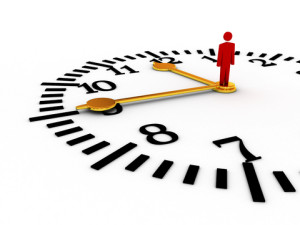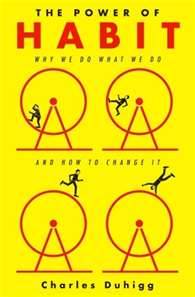Decluttering Your Use of Time
 Nine out of ten managers and leaders tell us that they wish they could make better use of their time. They look for programs in what is called Time Management. We have found that what is really needed is not a management program, but an overall strategy in determining the goals to be achieved and how they can be integrated into our daily workday habit
Nine out of ten managers and leaders tell us that they wish they could make better use of their time. They look for programs in what is called Time Management. We have found that what is really needed is not a management program, but an overall strategy in determining the goals to be achieved and how they can be integrated into our daily workday habit
If your day is like many of ours, there are constant distractions which interfere with us getting things done. Issues are constantly being raised by our colleagues, family, and friends. They distract you from what you originally planned to do with your day. At the end of the day, you find that things did not get done and the completion of important tasks delayed. There is a feeling that we have little control over what we do.
Can we make this all go away?
I was once talking with the president of a large company. He explained that one of the best parts of being president was that he got to call the meetings. He had control of the major part of his time. Of course, we cannot make those distractions go away, but with a better understanding of the value of time and some planning, there is a good chance that the current situation can be improved upon.
Our Time Strategy Myths
Much of our attitudes about time usage is based upon things we have learned over the course of our life. Here are a few to consider:
- The more you sweat the more you get-Edison once said the genius is 1% inspiration and 99% perspiration. That may be true for genius, but hard work can also lead to failure if the goal of the effect has not been vetted.
- Efficiency means effectiveness– But which comes first? The crew of the Titanic could efficiently organize the deck chairs, but what effect would that have in the effectiveness of their time.
- Burning the midnight oil – Parkinson’s Law states that work expands to the time allotted. In manufacturing output and productivity increased at two times. The first is when you add over time to the workday. More units are produced. The second is when you eliminate the overtime hours. People are just more productive because of more rest as a result of fewer hours.
- The best way to get the job done is do it yourself – That sure is the easy answer. There is no training or checking-up, or working about another’s ability. But in the long run, are you prepared to do everything yourself.
- More discipline means less freedom – The opposite is true. With increased discipline comes more free time and, therefore, more freedom. By setting goals and strategy, we impose order, making the most of time and energy, producing less work and more accomplishments.
- We work best under pressure– This is the defense of procrastination and self-delusion. Pressure makes us less effective and increases mistakes with no time for correction.
The Time Matrix
Let’s start buy understanding how you currently use your time during a week. Take 5 sheets of lined paper (7 if you would like) and list the hours of the day vertically down the left hand edge. At the top indicate one day of the week. Now over a one-week period report on the appropriate sheet for the day and the appropriate time slot, record your activities. Most people are not that detailed in recording their activities as prescribed, but general trends become obvious. With this information consider the following matrix.

The point in considering the Time Matrix (above) is that we need to find a way to move some of our time from the not important to the important sectors and from the urgent to the not urgent sectors. It is unrealistic to believe that time is not going to be spend in sectors I, III, and IV, but time spent in sector II, is an investment in productivity. Consider how you can spend a portion of your week doing, preparing, planning, prevention, building relationships and personal development.
Goals Setting
This is where the strategy comes into play. It’s one thing to say that each day you will spend from 8:00 to 8:30 AM answering emails. It’s another to say that your goal is to increase your potential customer network by 5 people each week and in order to do that you will spend from 9:00 to 9:30 each day contacting new people. See the difference? In the first case you were managing your time. In the latter case, you we setting a goal, giving it a priority, and putting together an action plan to achieve that goal. Time Strategy starts with setting SMART Goals (Specific, Measurable, Achievable, Realistically High, and Time Based). Knowing that you cannot achieve all your goals at once, they need to be prioritized. Select the most important to be worked on first. Those prioritized goals need to be incorporated into your weekly work schedule and now you have a Time Strategy.
Habits
As you review your reported use of time you may or may not notice that some things you do are habitual. The reason you may not notice them is because they occur without you knowing that you initiate them. Much of what we do is a pre-programed activity. Most of use rise each morning and don’t start the day by asking what to do first. We are programmed to brush our teeth, take a shower, shave, dress and put on the coffee. It’s automatic and a very constructive habit. Would you record activities such as these on your time matrix? Of course not!
The habits we have can be very beneficial or they can be time wasters. Our early morning routine is usually an example of a beneficial or good habit. My habit of having a big bowl of ice cream before going to bed may be enjoyable but not beneficial. My habit of gossiping with my co-workers every day is also an example of a non-productive habit. I bet no one put gossiping on their time matrix sheet.
The next question, “can habits leading to better use of time be created and can habits which  distract from productivity be changed?” The answer to both questions is yes. It requires identifying the habit, the source of the habit and reward to be gained by incorporating a good habit and undoing a bad habit from your daily routine. Charley Duhigg in his book The Power of Habits discusses how habits work in organizations and with individuals. He also discussed ideas on making a change in our daily habits. We also refer you to a previous article entitled, Habits Can Create Business Success.
distract from productivity be changed?” The answer to both questions is yes. It requires identifying the habit, the source of the habit and reward to be gained by incorporating a good habit and undoing a bad habit from your daily routine. Charley Duhigg in his book The Power of Habits discusses how habits work in organizations and with individuals. He also discussed ideas on making a change in our daily habits. We also refer you to a previous article entitled, Habits Can Create Business Success.
Leadership and business coaching is about creating productive change and part of that change is the development of new personal and organizational habits. Let’s talk! bob@plangoals.com
